This guide explores the pivotal realm of chatbot security, emphasizing its indispensable role in safeguarding digital interactions and ensuring user trust. We’ll uncover its key components, current challenges, and the strategies to fortify chatbot systems in an interconnected, data-driven world.
Quick Insight – For the Security-Savvy Reader:
- Chatbot security is foundational to the success and reliability of automated conversational systems. It entails mechanisms to protect sensitive user data, thwart potential breaches, and ensure encryption and authentication protocols are in place. As chatbots increasingly handle personal and financial details, robust security measures become paramount to prevent unauthorized access, data leaks, or malicious exploitation.
- In our digital age, where data is the new currency, chatbot security stands as a bulwark against potential threats. As businesses integrate chatbots into their operations, prioritizing safety ensures regulatory compliance and strengthens user trust and brand reputation. Embedding advanced security protocols in chatbot design and development is no longer optional; it’s critical for sustainable digital growth.
Welcome to the seventeenth Blue Lane Group article in the Best Chatbots for Customer Service: Blueprint for Success in 2023 series. These posts examine the essential chatbot topics of customer service automation, exploring how chatbots revolutionize interactions, enhance user satisfaction, and redefine the benchmarks for excellence in modern customer-centric businesses.
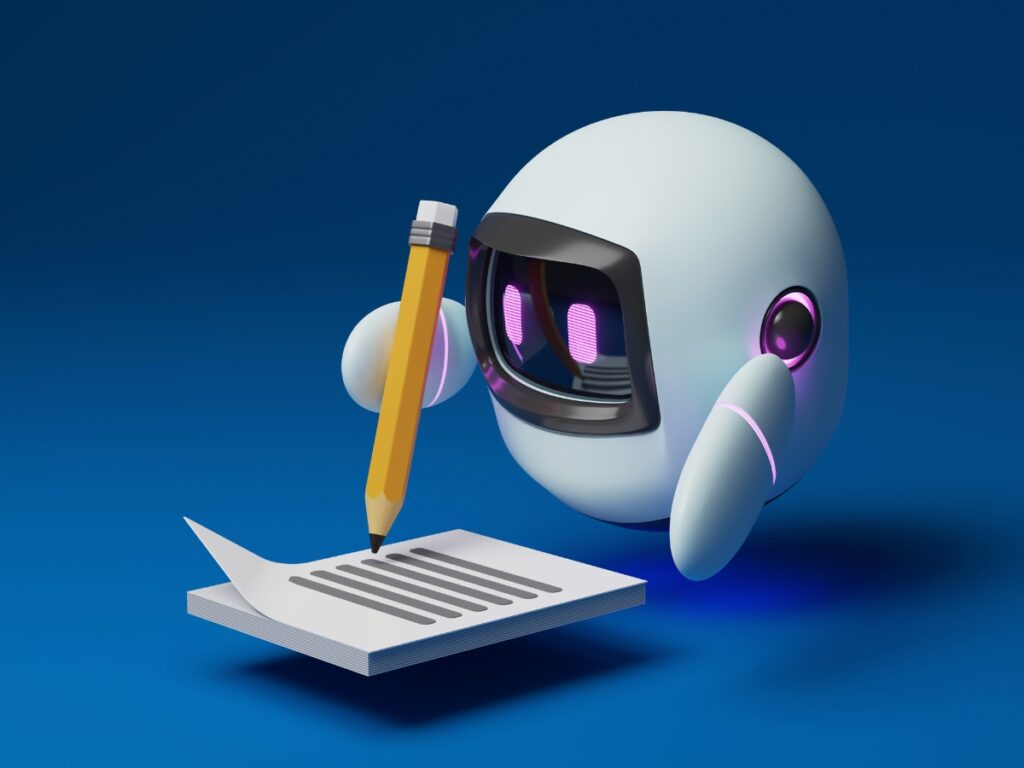
Disclosure: The digital products mentioned in this article are highly regarded in the marketplace and are endorsed by the Blue Lane Group staff. We may earn a commission at no additional cost if you purchase through the provided links.
Table of Contents

Introduction: The Importance of Chatbot Security in Today’s Digital Era
In our dynamic digital age, chatbot security, strengthened by tools like Checkmarx and Cloudflare, becomes imperative. As chatbots become the frontline interface for customer engagement, their safety is pivotal to protecting sensitive data and upholding a brand’s reputation.
The ramifications of chatbot security breaches can be extensive, affecting business operations and public trust. With sophisticated cyber threats looming and chatbots’ responsibility of handling critical information, businesses are now turning to advanced solutions like Imperva and Norton Bot Security to fortify their chatbot defenses.
Understanding Chatbots: An Essential Business Tool
Chatbots, enhanced with platforms like Landbot and BotGuard, are AI-driven tools replicating human conversation. They’ve evolved into indispensable assets for businesses, streamlining interactions, automating tasks, and ensuring seamless 24/7 customer service.
From resolving straightforward inquiries to managing intricate task executions, chatbots offer a spectrum of capabilities. Their integration across websites, social media, and apps, significantly when fortified by Webroot SecureAnywhere, emphasizes the importance of chatbot security in today’s tech landscape.

The Evolution and Rise of Chatbots in Business
Initially, chatbots were simple tools that followed scripts. However, with advancements in AI and platforms like MobileMonkey and BotDefense, they’ve morphed into sophisticated digital assistants. Chatbots can now instantly process textual and voice interactions, catering to user needs.
Whether it’s assisting with product choices, guiding users through processes, or automating order placements, their primary focus remains: enhancing user engagement and experience. With their growing significance in e-commerce and banking sectors, tools like SafeChat and ThreatMetrix are crucial to safeguard these digital assistants.
The Expanding Role of Chatbots in the Commercial World
Optimized with Akamai Bot Manager and Distil Networks, Chatbots are no longer just supplementary tools in the business ecosystem. They’ve taken center stage in various domains. E-commerce giants utilize them for personalized shopping experiences, while banks provide instant customer support, all backed by Barracuda Web Application Firewall.
Healthcare providers implement chatbots for initial health assessments and travel agencies for real-time booking assistance. As businesses continue to exploit the benefits of chatbots, the emphasis on their security, underlined by tools like Fortinet’s FortiWeb, becomes even more paramount.

Historical Context: The Evolution of Chatbot Security
The trajectory of chatbot security has paralleled the advancements in chatbot technology. In the early days, chatbots were rudimentary, script-based tools, and security was a minimal concern. Tools like Checkmarx were introduced to counter foundational threats, ensuring a safe conversational experience.
However, the security dynamics shifted as chatbots accessed databases and handled user data. Integrating solutions like Cloudflare and Imperva became a response to more advanced hacking attempts.
A Look Back: Initial Challenges and Solutions
Initially, chatbots were primarily exposed to primary threats like spam attacks and script manipulations. The security emphasis was on preventing data breaches and avoiding bot exploitation. Solutions like Norton Bot Security emerged, designed to tackle these early challenges.
But as the technological framework supporting chatbots grew more intricate, so did the risks. This evolution demanded more advanced defensive strategies, leveraging tools such as Rapid7 to identify and mitigate vulnerabilities before they could be exploited.
The Modern Shift: New Age Threats and Their Impact
As chatbots became more advanced, driven by AI and deep learning algorithms, they also became treasure troves of data, attracting sophisticated cyber threats. The stakes were higher with chatbots integrating into e-commerce, banking, and more.
Data theft, identity theft, and advanced DDoS attacks became prominent concerns. Modern protective shields, including Webroot SecureAnywhere and BotGuard, were developed, offering cloud-based solutions and real-time threat monitoring to ensure chatbots remained ahead of these emerging cyber threats.

Chatbot Security Risks: Threats, Vulnerabilities, and Solutions
Differentiating between threats and vulnerabilities is crucial for adequate chatbot security. Threats are potential malicious actions that can exploit a system’s inherent weaknesses. For chatbots, threats could range from unauthorized data access to misinformation campaigns.
On the other hand, vulnerabilities could be weak encryption or flawed authentication processes. Tackling these requires a multifaceted approach. SafeChat offers end-to-end encryption with multifaceted confidentiality concerns, while BotDefense uses AI-driven methodologies to continuously monitor and defend against evolving threats.
The collaboration of such tools, coupled with analytics from ThreatMetrix, provides a holistic security blanket for chatbots in today’s cyber landscape.
Differentiating Between Threats and Vulnerabilities
Comprehending the subtle distinction between threats and vulnerabilities is essential to devise a robust chatbot security strategy. Threats represent potential malicious actions or events, which could be initiated by hackers, competitors, or even insiders. These could range from a malicious code injection to data extraction attempts.
Vulnerabilities, conversely, are inherent weaknesses within the chatbot system or its supporting infrastructure that these threats can exploit. For instance, a chatbot that hasn’t been secured with tools like Checkmarx might have coding vulnerabilities, making it more susceptible to threats.
Understanding this distinction helps businesses to allocate resources effectively, prioritize patches, and apply the appropriate security measures, such as those provided by Imperva.
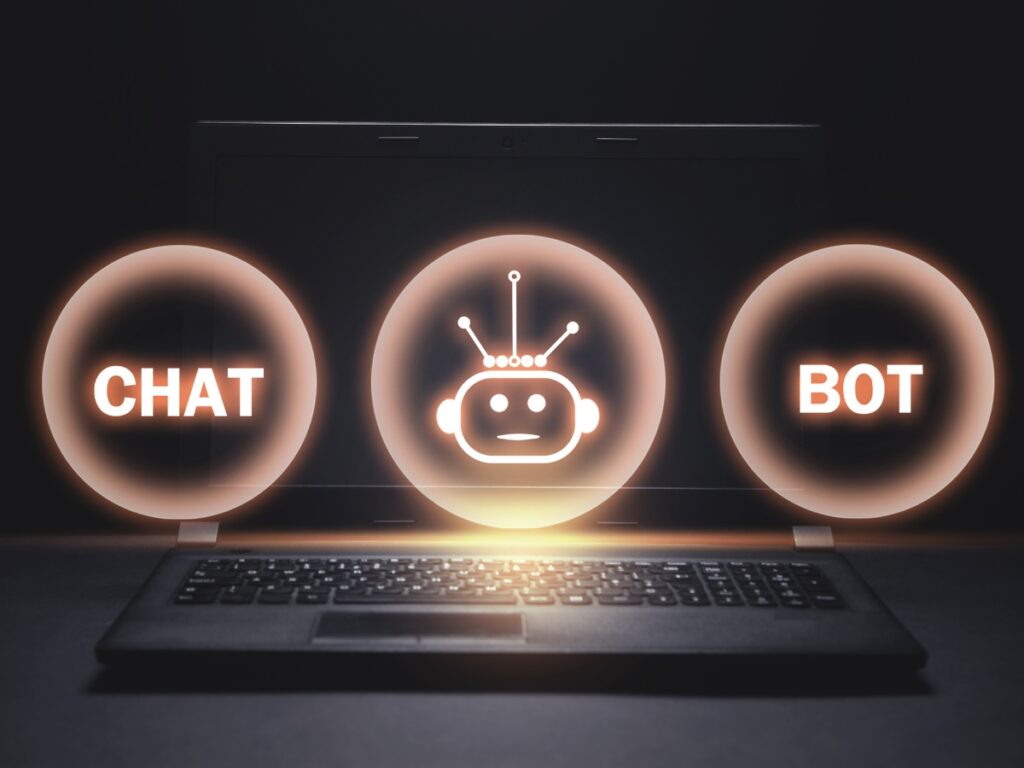
An Overview of Specific Chatbot Security Risks
Given their interactive nature and database integration, Chatbots are exposed to unique security risks. These risks could range from data breaches, where sensitive user information is disclosed, to more sophisticated attacks like bot impersonation. There’s also the risk of man-in-the-middle attacks, where attackers intercept and alter messages between the user and the bot.
Additionally, with the rise of AI-driven bots, there’s the threat of adversarial attacks, where hackers feed deceptive data to bots to confuse their algorithms. Implementing measures from platforms like Norton Bot Security can help counter such multifaceted risks.
Threats: External and Internal Factors
When assessing chatbots, it’s crucial to categorize them based on their origin. External threats often come from hackers or competitors aiming to exploit your chatbot for data extraction, sabotage, or misinformation. They could deploy techniques like DDoS attacks, aided by botnets, to overwhelm your chatbot service.
On the other hand, internal threats might arise from disgruntled employees or unintended system loopholes. For instance, an insider might know about backdoors in the chatbot’s design and could misuse this information.
Solutions like Webroot SecureAnywhere are pivotal in safeguarding chatbots from these threat vectors, ensuring continuous monitoring and real-time threat neutralization.
Vulnerabilities: Points of Weakness and Their Implications
Every chatbot has specific inherent vulnerabilities arising from its design, coding, or the platforms it operates on. For example, a chatbot without secure encryption protocols might be susceptible to data eavesdropping.
Similarly, a bot lacking robust authentication measures can be impersonated, leading to misleading user interactions. There’s also the risk associated with third-party integrations; if a linked platform has a vulnerability, it could indirectly compromise the chatbot.
Recognizing these vulnerabilities and deploying countermeasures from tools like BotGuard and SafeChat is pivotal in building a resilient chatbot security framework.

The 7 Essentials to Fortify Your Chatbot Security
In today’s rapidly evolving digital realm, where interactions and transactions happen at the click of a button, the security of chatbot communications stands out as a critical concern. As chatbots increasingly handle sensitive data, from personal information to financial details, ensuring their safety is a technical necessity and a measure of user trust.
Chatbots, being at the forefront of customer interactions, are not only gatekeepers of data but also the face of a brand’s digital identity. Therefore, a chatbot security breach can result in data loss and significant reputational damage.
To navigate the intricate challenges cyber threats present, businesses must delve deep into the foundational essentials of chatbot security. Addressing the multifaceted concerns and risks tied to chatbot deployments requires a comprehensive approach.
1. Encryption: The First Line of Defense
Encryption is crucial in safeguarding the data transferred between users and chatbots. As chatbots frequently handle sensitive user details, whether personal preferences or financial data, encryption ensures that this information remains secure during transit.
Leveraging tools like SafeChat to facilitate end-to-end encryption means that even if malicious entities intercept data, it remains incomprehensible. The data can be accessed only with the correct decryption key, making it a formidable first line of defense.
In an era where data breaches are increasingly common, businesses that utilize robust encryption techniques bolstered by solutions from companies like SafeChat signal a solid commitment to user privacy.
2. Robust Authentication and Authorisation
In the world of chatbot security, authentication and authorization play pivotal roles. While authentication confirms the identity of a user interacting with the bot, approval dictates what this authenticated user can and cannot do.
Implementing a two-factor authentication mechanism can add an extra layer of security, ensuring only legitimate users access the chatbot. Moreover, solutions like MobileMonkey provide features that enable businesses to set distinct roles and permissions.
This granularity in access control ensures that users can only tap into the chatbot functionalities they’re authorized to use, effectively reducing the risk of internal data breaches or misuse.

3. Implementing Tightened Processes and Protocols
Security isn’t just about tools; it’s also about the procedures in place. Chatbots require strict operational protocols like any other digital platform to ensure safety. This includes regular audits, updating the chatbot software, and ensuring third-party integrations comply with security standards.
Platforms like Imperva offer bot management solutions, which can identify and mitigate potential malicious activities. Regularly reviewing and tightening these processes with dedicated tools can fortify a chatbot’s defenses against current and emerging threats.
4. Continuous Education: Empower Your Team and Users
One of the most overlooked aspects of security is human behavior. Human error or ignorance can introduce vulnerabilities even with sophisticated security measures. This emphasizes the importance of continuously educating both the development team and end-users.
Businesses can create a holistic security environment by updating the team about the latest security threats and best practices and informing users about safe interaction guidelines with chatbots. Tools like BotDefense utilize AI to provide insights and optimizations, offering teams actionable intelligence to stay ahead of potential threats.
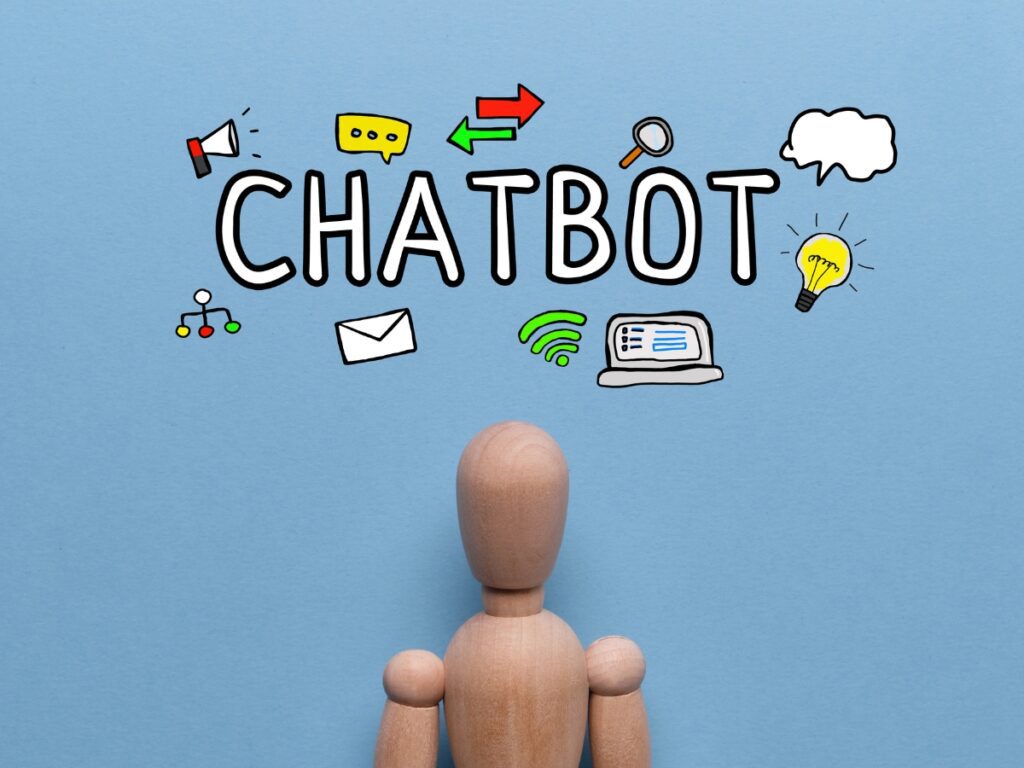
5. Exploring Emerging Methods and Technologies
In the fast-evolving domain of cybersecurity, staying updated with the latest innovations is imperative. As cyber threats become more sophisticated, so must the defenses against them. For chatbots, this means continuously exploring and adopting emerging security methods and technologies. AI-driven solutions, for instance, have the potential to detect and respond to threats in real time.
Platforms like BotDefense optimize chatbot security using AI, ensuring hazards are identified before they become evident. Still in its infancy, Quantum computing promises to revolutionize encryption techniques, making data breaches significantly more challenging for malicious entities. Adopting such avant-garde technologies showcases a proactive approach to chatbot security.
6. Regular Testing: Ensure Efficacy of Security Measures
While implementing security measures is essential, regularly testing them for efficacy is equally crucial. This involves routinely checking chatbot defenses to identify any weak points that might have emerged over time or due to software updates.
Platforms like Akamai Bot Manager are instrumental in identifying, monitoring, and mitigating malicious bots, ensuring chatbot services remain uncompromised. Additionally, penetration testing, where ethical hackers attempt to breach chatbot defenses, can provide valuable insights into potential vulnerabilities.
By frequently testing and tweaking security protocols based on these findings, businesses can ensure their chatbots remain resilient against evolving threats.

7. Proactive Defense with Real-time Monitoring
A proactive approach to chatbot security entails real-time monitoring of all interactions. Actively overseeing chat traffic can identify and address suspicious activities instantaneously. Solutions like Cloudflare and BotGuard offer real-time monitoring capabilities, allowing businesses to pinpoint areas of concern swiftly.
If a potential threat is detected, immediate countermeasures can be deployed, preventing or minimizing damage. Moreover, when combined with AI-driven analytics from platforms like ThreatMetrix, real-time monitoring can predict potential threat patterns, allowing businesses to fortify their defenses proactively.
In the dynamic world of cybersecurity, such proactive measures can make the difference between a secure chatbot and a compromised one.
Chatbot Integration: Security Implications and Solutions
As chatbots increasingly interface with myriad business systems, understanding the security implications of such integrations becomes critical. When a chatbot communicates with a CRM, database, or any other backend system, it accesses and processes potentially sensitive data.
Without robust security protocols, this opens doors for cyberattacks that can exploit these integration points. For instance, a chatbot integrated with a CRM might have access to customer contact details, purchase histories, and more. An unprotected chatbot could inadvertently become a gateway for cybercriminals.

Interaction with CRM, Databases, and More
Integrating chatbots with systems like CRMs, ERPs, and databases means they handle sensitive data daily. Solutions such as Webroot SecureAnywhere play a pivotal role by providing cloud-based security tailored specifically for chatbot platforms.
Another layer of protection comes from tools like Distil Networks, which offers bot mitigation and safeguards against malicious bot activities such as web scraping. When chatbots interface with databases, especially those storing personal customer data, they must do so with encrypted channels to ensure that data in transit remains uncompromised.
Security Protocols for Seamless Integration
While integration broadens a chatbot’s functionality, it’s essential to have stringent security protocols in place. Tools like Barracuda Web Application Firewall ensure that chatbots, especially those merged with web applications, remain protected from potential cyberattacks.
Employing API gateways with robust authentication mechanisms can safeguard data exchanges between chatbots and integrated systems. Norton Bot Security offers tools to shield chatbots from cyber threats, ensuring that integrations remain secure and functional.

Regulatory Compliance and Chatbots
As data privacy concerns become paramount, adhering to regulatory compliance is recommended and often mandated. Chatbots might need to comply with regulations such as GDPR, CCPA, or HIPAA, depending on the region and industry.
Tools like Symantec Endpoint Protection provide advanced security solutions, ensuring integrated chatbots meet regulatory standards. It’s also essential to have regular audits and assessments to ensure continuous compliance, primarily when the chatbot handles sensitive or personally identifiable information.
With the evolving landscape of data protection laws, being proactive in understanding and implementing necessary compliance measures is imperative.
Navigating GDPR, CCPA, and Other Data Protection Measures
With the rise in data breaches and cyberattacks, regulatory bodies worldwide have developed stringent data protection measures to safeguard user information. The General Data Protection Regulation (GDPR) in Europe and the California Consumer Privacy Act (CCPA) in the U.S. are notable examples.
These regulations mandate that businesses, including those deploying chatbots, ensure the utmost security and transparency when handling personal data. Using solutions like Checkmarx, which provides static code analysis, companies can ensure that their chatbots’ coding practices adhere to these regulations, mitigating potential vulnerabilities.
Ensuring Your Chatbot Adheres to Global Standards
Chatbot deployments that cater to a global audience face the challenge of adhering to various regional and international data protection standards. This requires a multifaceted approach.
Firstly, employing tools like Rapid7 can help pinpoint and manage vulnerabilities, ensuring chatbots are free from exploitable weaknesses. Secondly, continuous monitoring and updating practices should be in place, adapting to the ever-evolving global data protection landscape.
Collaborating with platforms such as BotGuard, which protects chatbots from malicious activities, ensures that security measures align with international standards.
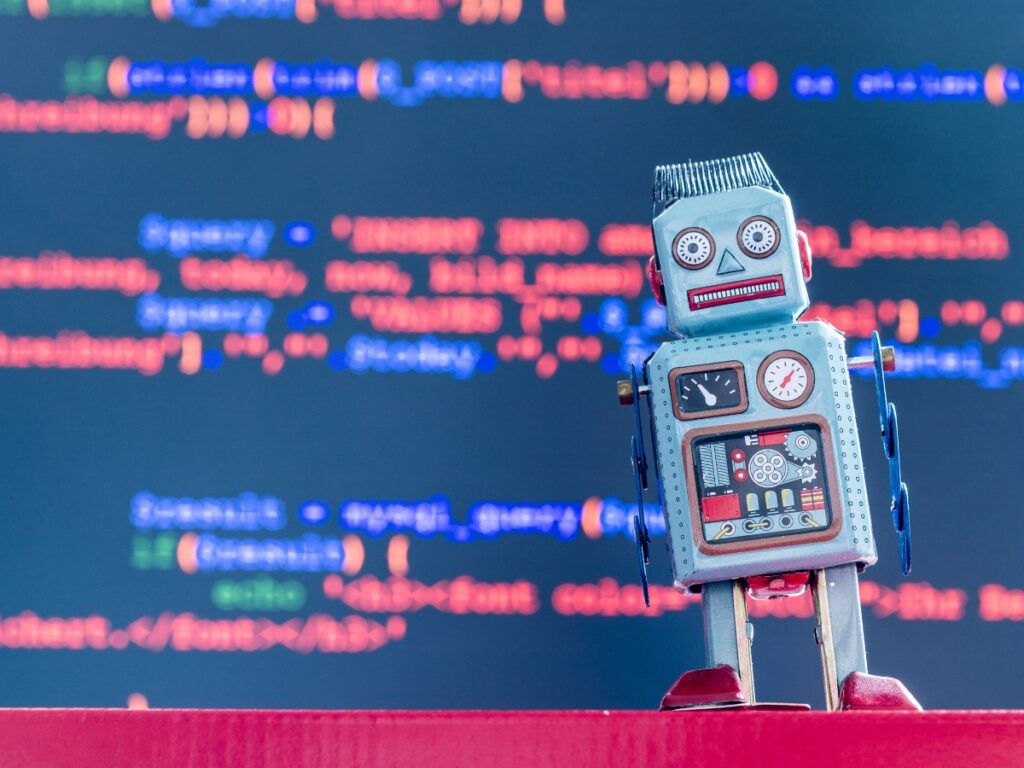
Case Studies: Lessons from Real-world Chatbot Security Breaches
While there have been numerous success stories in chatbot deployments, some stand out as cautionary tales. Real-world breaches highlight the existing vulnerabilities and underscore the importance of proactive measures.
For instance, specific chatbots in the past have been manipulated to divulge sensitive user information, leading to PR nightmares for the businesses involved. Learning from these incidents, companies have leveraged solutions like Akamai Bot Manager, which identifies, monitors, and mitigates malicious bots.
Such tools are pivotal in ensuring past mistakes aren’t repeated, making chatbot interactions more secure and reliable.
How Businesses Addressed and Overcame Security Challenges
Confronting chatbot security challenges head-on requires combining technology, strategy, and adaptability. Forward-thinking businesses have employed tools like ThreatMetrix to assess risks associated with chatbot user behaviors.
After identifying potential threats, these companies integrate robust security measures, often leveraging the capabilities of solutions like Cloudflare, which offers DDoS protection crucial for chatbots that are publicly accessible.
By continuously learning and iterating, businesses can overcome challenges and position their chatbot deployments as industry benchmarks in security.
Key Takeaways and Strategies for Future Prevention
One of the most prominent lessons in chatbot security is that proactive measures outperform reactive ones. Leveraging tools like Symantec Endpoint Protection ensures advanced security solutions, especially when chatbots are integrated into larger systems.
By understanding the evolving threat landscape and integrating state-of-the-art security measures, businesses can fortify their chatbot deployments against potential breaches. Regularly updating chatbots, keeping abreast of the latest security research, and conducting periodic risk assessments are crucial steps toward future-proofing chatbot interactions.
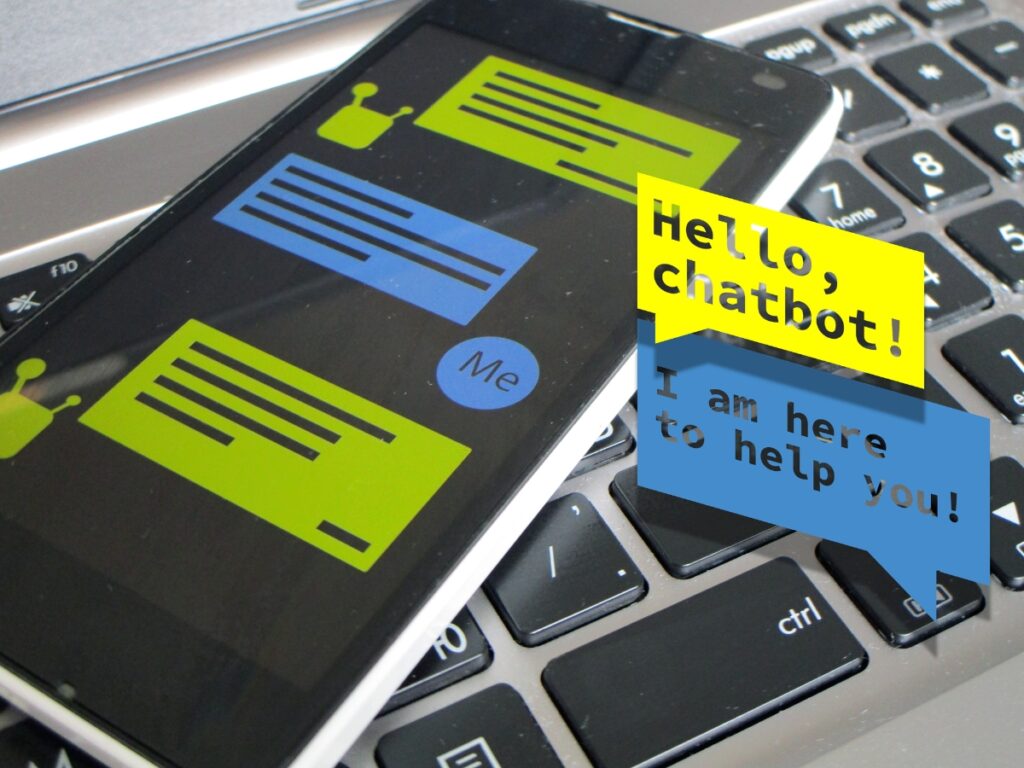
User’s Role in Chatbot Security: Empowering and Educating
While technological solutions are pivotal in enhancing chatbot security, user education remains equally critical. Users, often the first line of interaction with chatbots, should be equipped with the knowledge to identify suspicious activities.
Platforms like Webroot SecureAnywhere provide cloud-based security solutions tailored for chatbot platforms, but ensuring users are aware of potential threats makes these tools even more effective.
Best Practices for Users Interacting with Chatbots
Users must adhere to certain best practices as chatbots become integral to the digital experience. Utilizing security platforms like BotDefense, which optimizes chatbot security through AI, can be complemented with user practices like not sharing sensitive information unless necessary and ensuring that they interact with verified and trusted chatbot platforms.
The Do’s and Don’ts: Tips for Safe Chatbot Interactions
Interacting safely with chatbots begins with clearly understanding what should and shouldn’t be done. Do verify the authenticity of the chatbot, especially if it’s from a financial institution or other sensitive sector. Using tools like Distil Networks, which offers bot mitigation, can provide an added layer of security. Don’t share personal information unless you know the bot’s legitimacy.
Do regularly update your software and stay informed about potential threats. Don’t click on suspicious links or download files from untrusted chatbots. By following these guidelines and leveraging the power of solutions like Fortinet’s FortiWeb, users can ensure their interactions remain productive and secure.

Future Outlook: Trends and Innovations in Chatbot Security
The future of chatbot security is set to be dynamic, reflecting the rapid advancements in AI technology and cybersecurity measures. As chatbots become more sophisticated, integrating deeper with core business systems and handling more sensitive data, the need for robust security solutions becomes even more pressing.
AI and machine learning are playing pivotal roles in advancing chatbot security. Predictive analytics, derived from AI algorithms, will be increasingly used to detect unusual patterns and potential threats in real-time. Moreover, integrating AI can facilitate instant mitigation actions, minimizing the potential damage of any breach.
Quantum computing, another promising frontier, might revolutionize encryption techniques. With its potential to process complex computations instantaneously, quantum computing could offer encryption solutions that are virtually unbreakable by current standards. However, this also poses challenges, as quantum computers could break existing encryption methods, necessitating a complete overhaul of current security protocols.
Blockchain, known for its applications in cryptocurrency, also has implications for chatbot security. Its decentralized nature could be used to create tamper-proof logs of chatbot interactions, ensuring data integrity and accountability.
The Promise of AI and Quantum Computing in Enhancing Security
Artificial Intelligence (AI) is already a staple in many modern security solutions, with platforms like BotDefense utilizing AI to optimize chatbot security. As AI models become more advanced, they’ll be better equipped to detect and combat a wide array of cyber threats in real time, ensuring chatbot interactions remain secure.
Quantum Computing, though still in its infancy, has the potential to revolutionize chatbot security. Its ability to process vast amounts of data at unparalleled speeds means that future security protocols, bolstered by tools like Checkmarx, can identify and neutralize threats faster.
Preparing for Tomorrow: Anticipating Future Challenges
The dynamic nature of the digital realm means new challenges are always on the horizon. With the growing adoption of IoT devices and the interconnectedness of digital platforms, chatbots might face threats from previously unforeseen avenues.
Protection solutions, like Cloudflare, offer various services, including DDoS protection, which will be vital as chatbots become more publicly accessible. As businesses continue to integrate chatbots into their core operations, keeping abreast of the latest threats and leveraging cutting-edge security solutions like Imperva and Norton Bot Security will be paramount to ensure the safe and efficient functioning of chatbots in the future.

FAQ: Tackling the Most Common Questions on Chatbot Security
- What’s the difference between threats and vulnerabilities in chatbot security?
Threats refer to any potential harm that can exploit a chatbot’s vulnerability, like a hacker trying to breach the system. Vulnerabilities are the weaknesses or gaps in the chatbot’s security measures that allow those threats to occur. - How do companies like Imperva and Cloudflare enhance chatbot security?
Companies like Imperva offer bot management solutions that help identify and mitigate malicious bot activities. Cloudflare provides various security services, including DDoS protection, which is crucial for publicly accessible chatbots. - Can chatbots be hacked?
Yes, like any other digital system, hackers can target chatbots. However, advanced security solutions like Norton Bot Security and Checkmarx can significantly reduce the risks. - How do integrations affect chatbot security?
Integrations can introduce new vulnerabilities if not securely implemented. Solutions like Webroot SecureAnywhere and Barracuda Web Application Firewall help ensure that integrated systems remain secure.
Addressing Concerns and Clearing Misconceptions
One of the common misconceptions about chatbot security is that once set up, the security measures remain static. With evolving threats, security measures need to be continuously updated. Another misconception is that smaller chatbots are not at risk.
However, regardless of the size or purpose of the chatbot, without proper security measures like those provided by BotGuard or Akamai Bot Manager, they are susceptible to threats.

Conclusion: Crafting a Secure Chatbot Ecosystem for Tomorrow
As digital interactions become increasingly integral to modern business operations, the role of chatbots continues to expand. With this growth comes a heightened emphasis on security, ensuring that every interaction is efficient and protected from potential threats.
Providing a secure chatbot ecosystem requires proactive strategies, from understanding the ever-evolving landscape of threats to adopting best practices in cybersecurity. Organizations must prioritize security not as an afterthought but as a fundamental aspect of their chatbot strategy.
As technology and cyber threats continue to advance, the importance of a well-fortified chatbot ecosystem will only become more paramount, shaping the future of digital communications.

You Might Also Like
If you enjoyed this article and received value from it, check out the other Blue Lane Group articles in the Best Chatbots for Customer Service: Blueprint for Success in 2023 series:
- Chatbot ROI: Unlock Unmatched Profits with Top 5 Strategies for Optimization
- Omnichannel Chatbots: Unlock Consistent Engagement with 7 Best Practices
- Chatbot KPIs: 10 Essential Metrics to Drive Optimal Results
- Multilingual Chatbots: Break Language Barriers with 8 Leading Solutions
- Enterprise AI Chatbot Solutions: 7 Key Tools to Supercharge Your Business
- Mastering Chatbot Training: 7 Strategies for Optimal User Engagement
- Chatbot APIs: 6 Leading Options for Seamless Functionality
- Chatbot Scripts: 9 Proven Strategies to Boost Conversions and Engagement
- Rule-Based Chatbots: Drive Consistent Responses with Top 9 Benefits
- Chatbot Success Metrics: Unlock Optimal Performance with Top 10 Insights
- Chatbot Analytics: Drive Excellence with 10 Essential Tools
- Mastering Interactivity: Top 10 Chatbot Frameworks Explored
- Chatbots in Retail: 7 Winning Strategies for Elevated Customer Engagement
- Chatbots for Lead Generation: 6 Best Practices to Transform Your Funnel
- Chatbot Integrations: 6 Essentials for Enhanced Productivity and Operations
- Chatbot UX: Enhance Engagement with These 8 Vital Principles
- Chatbot Security: 7 Essentials to Safeguard Your Business
- Chatbot Development Services: 7 Must-Knows to Boost Your ROI
- Chatbots in Healthcare: 6 Leading Innovations Revolutionizing Patient Care
- NLP for Chatbots: Top 6 Techniques Transforming Chat Experiences
- Benefits of Chatbots in Customer Service: 7 Key Sales Boosters
- 7 Essential Social Media Chatbots for Unmatched Engagement
- Building Chatbots Powered by AI: 5 Proven Techniques for Epic Profits





